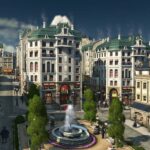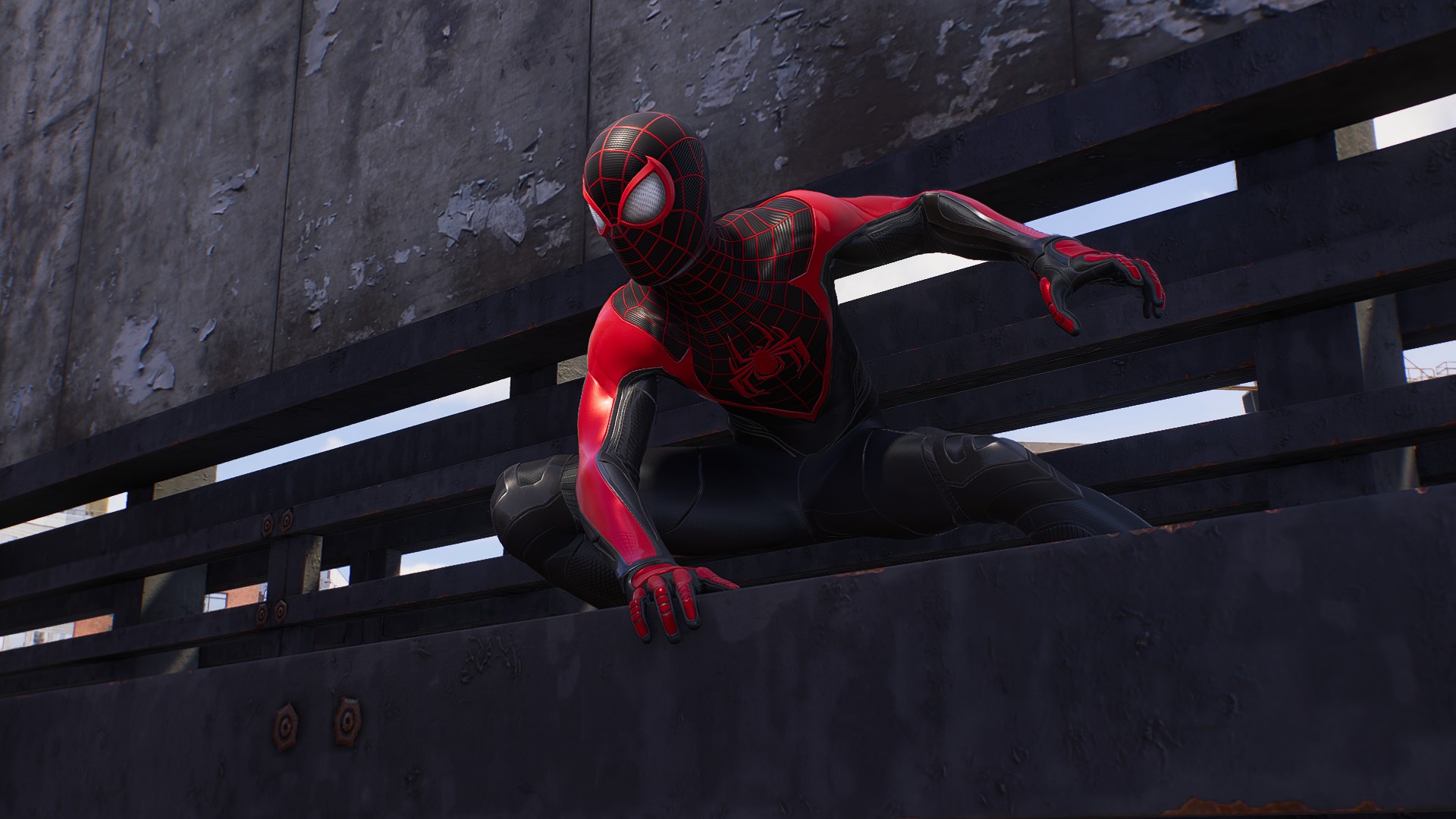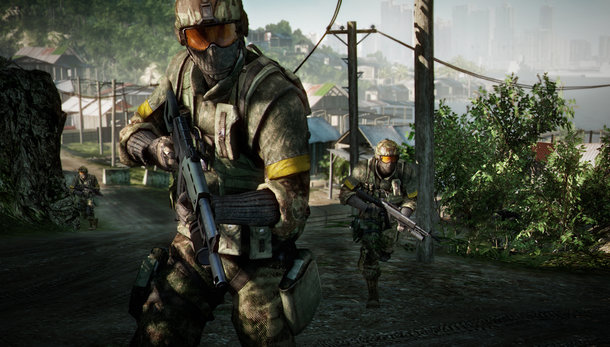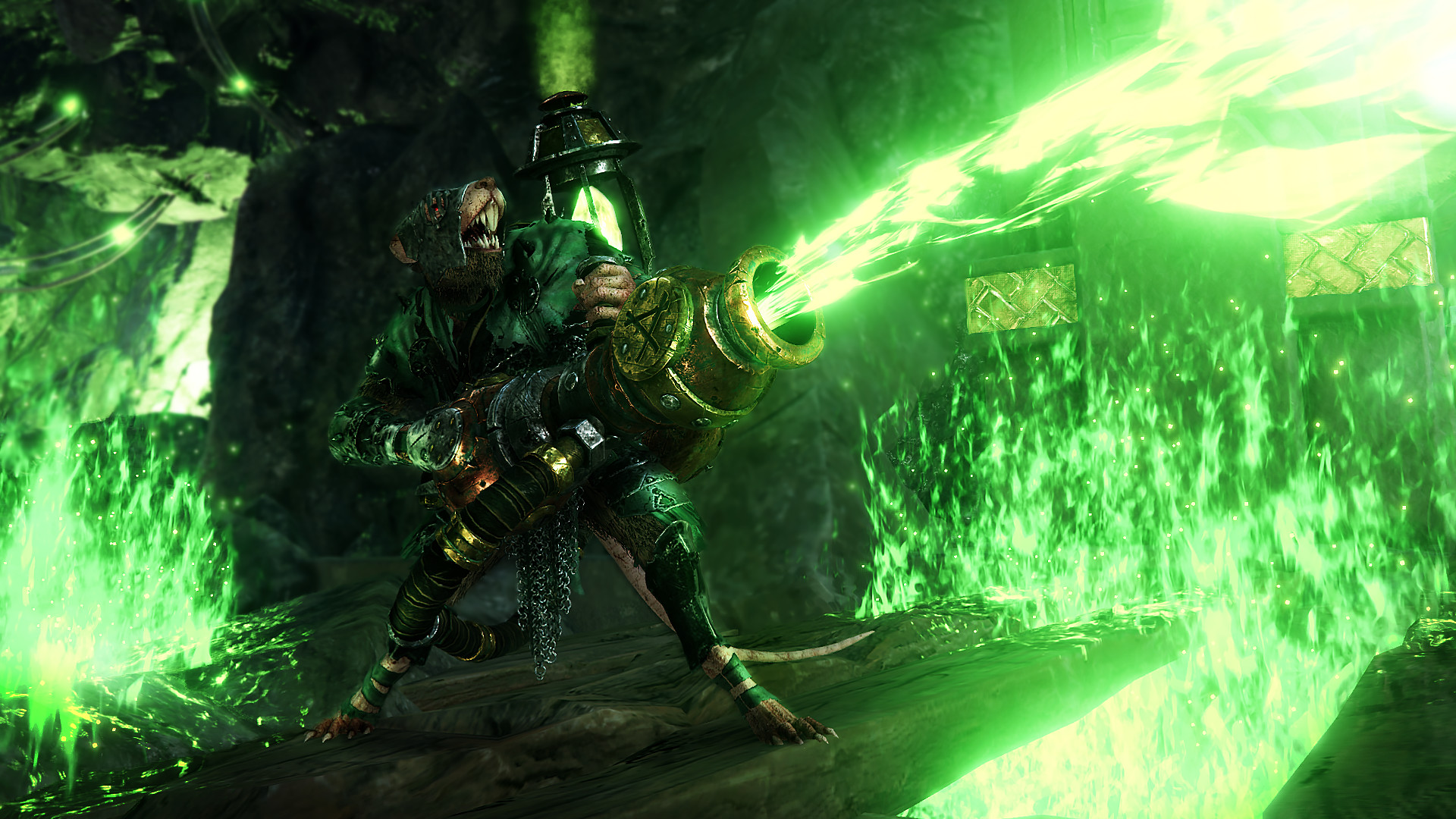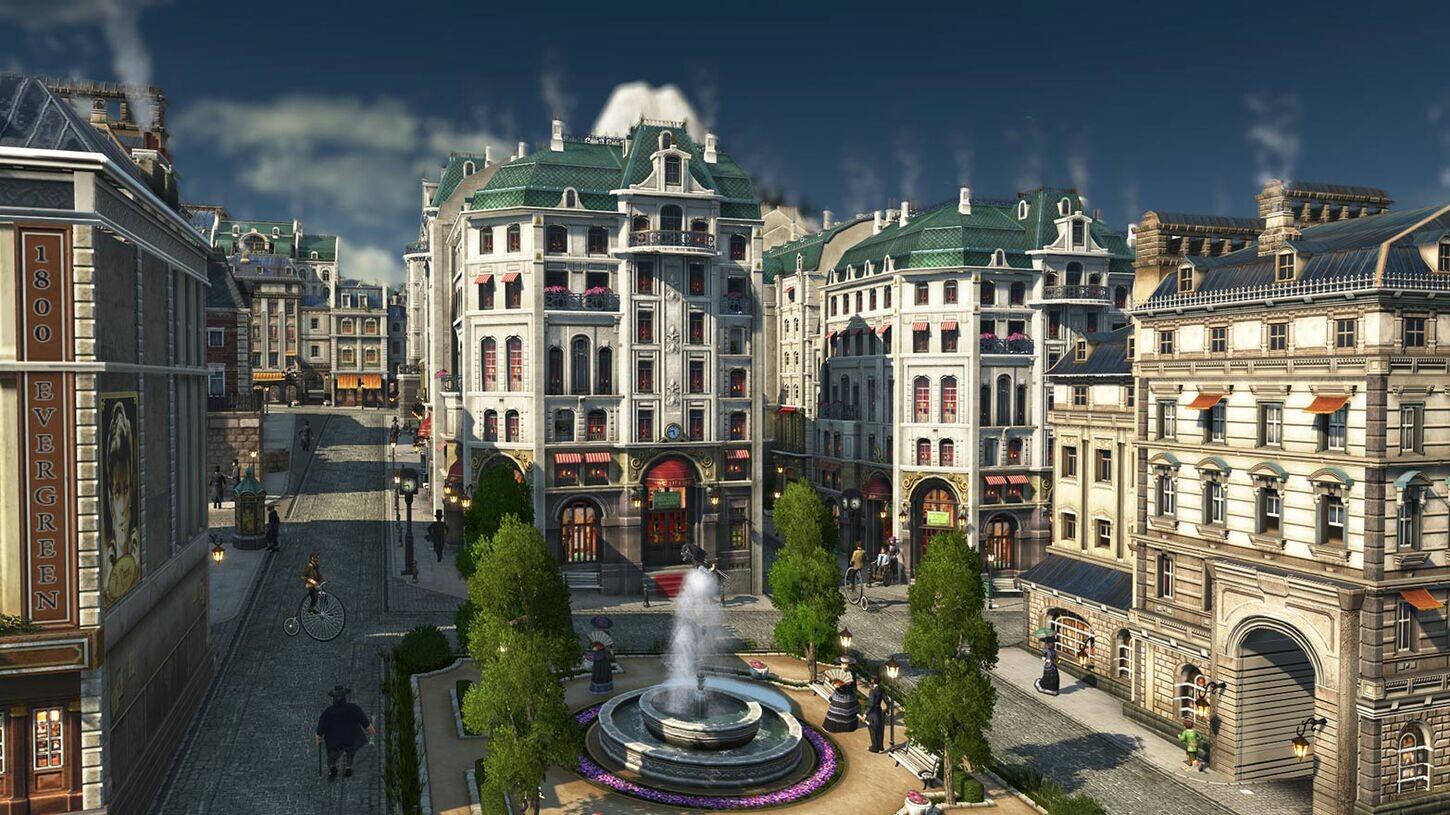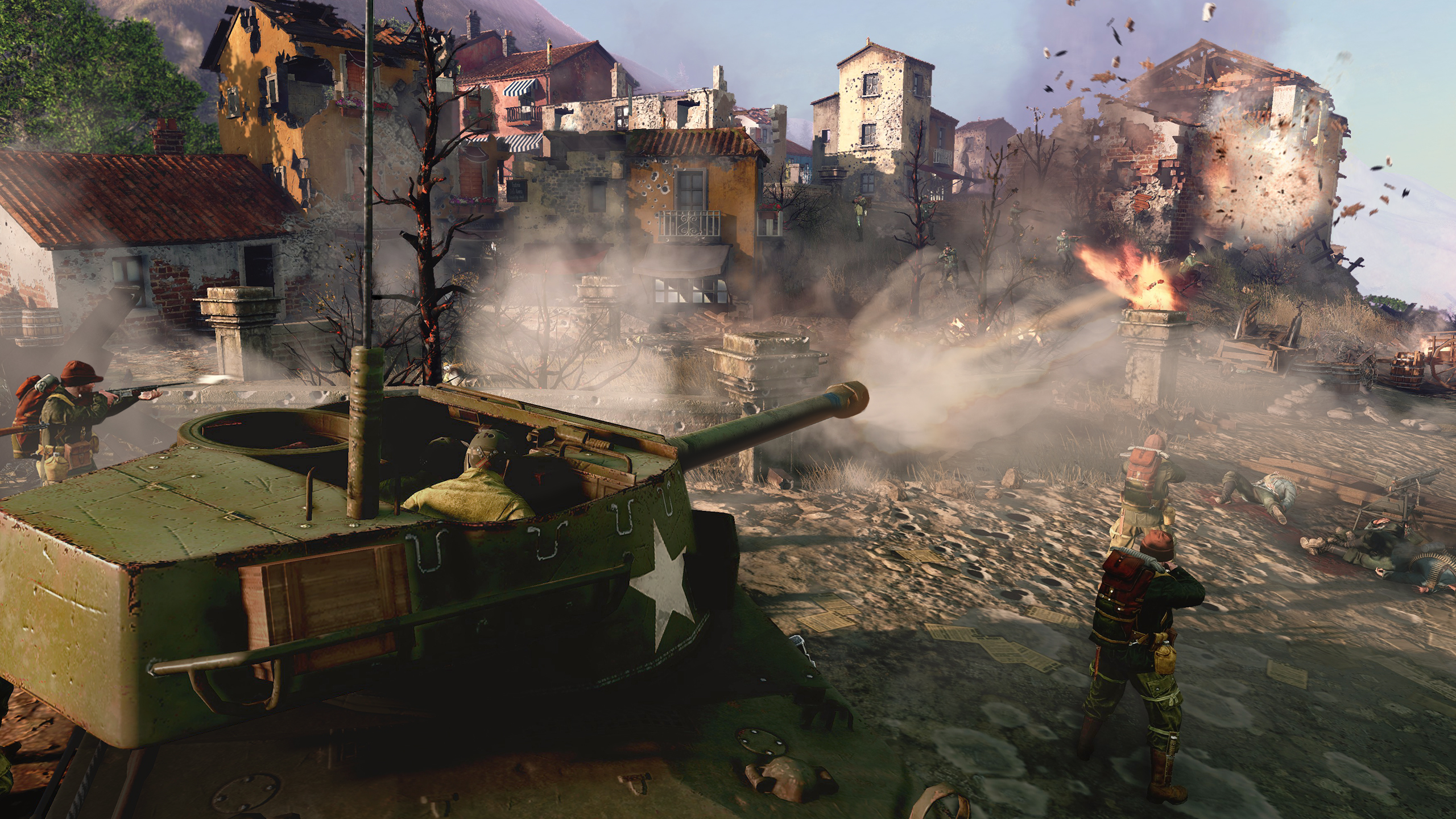What is it? A web-swingin’ superhero sequel.
Release date Jan 30, 2025
Expect to pay $60/£50
Developer Insomniac Games, Nixxes Software
Publisher PlayStation Publishing LLC
Reviewed on Nvidia Geforce RTX 3080, AMD Ryzen 9 5900X, 32GB RAM
Steam Deck TBA
Link Official site
In its first Spider-Man game, developer Insomniac already got the most important thing right: the feel of being super-powered. That was most evident in the excellent traversal, which set a new high watermark for web-swinging, but also in the smooth and agile combat. Where it struggled was in giving you anything interesting to do with all that power, its visually impressive but largely empty open world offering only tired old side activities and filler.
My hope for this sequel was that with the core action already perfected, there would be the space to improve on the wider formula, creating a more interesting New York playground. Instead, Marvel’s Spider-Man 2 simply has more stuff—a bigger story, more pointless collectibles, sprawling skill trees, and double the Spider-Men.
The result is a cinematic but messy experience that not only still bears all the same flaws as its predecessor, but in many areas—particularly the storytelling—feels like a step backwards. The ropiness of this PC port is a sad addition to the issues, resulting in a flawed version of an already flawed sequel.
The set-up is as straightforward as ever. You swing freely around New York, taking on whatever missions and activities you choose. The main story has that mix of slick but very linear action setpieces and quiet character moments common to almost all the modern PlayStation first-party titles—outside of those, the city is scattered with optional side missions and things to find. The big twist in Spider-Man 2 is that… well, there’s two Spider-Men.
Where the first game starred Peter Parker, and its spin-off starred Miles, this one has both. Story missions choose for you, but often swap seamlessly between them as the action demands. Out in the open world, you’re free to change at will, with only a handful of activities requiring one or the other.
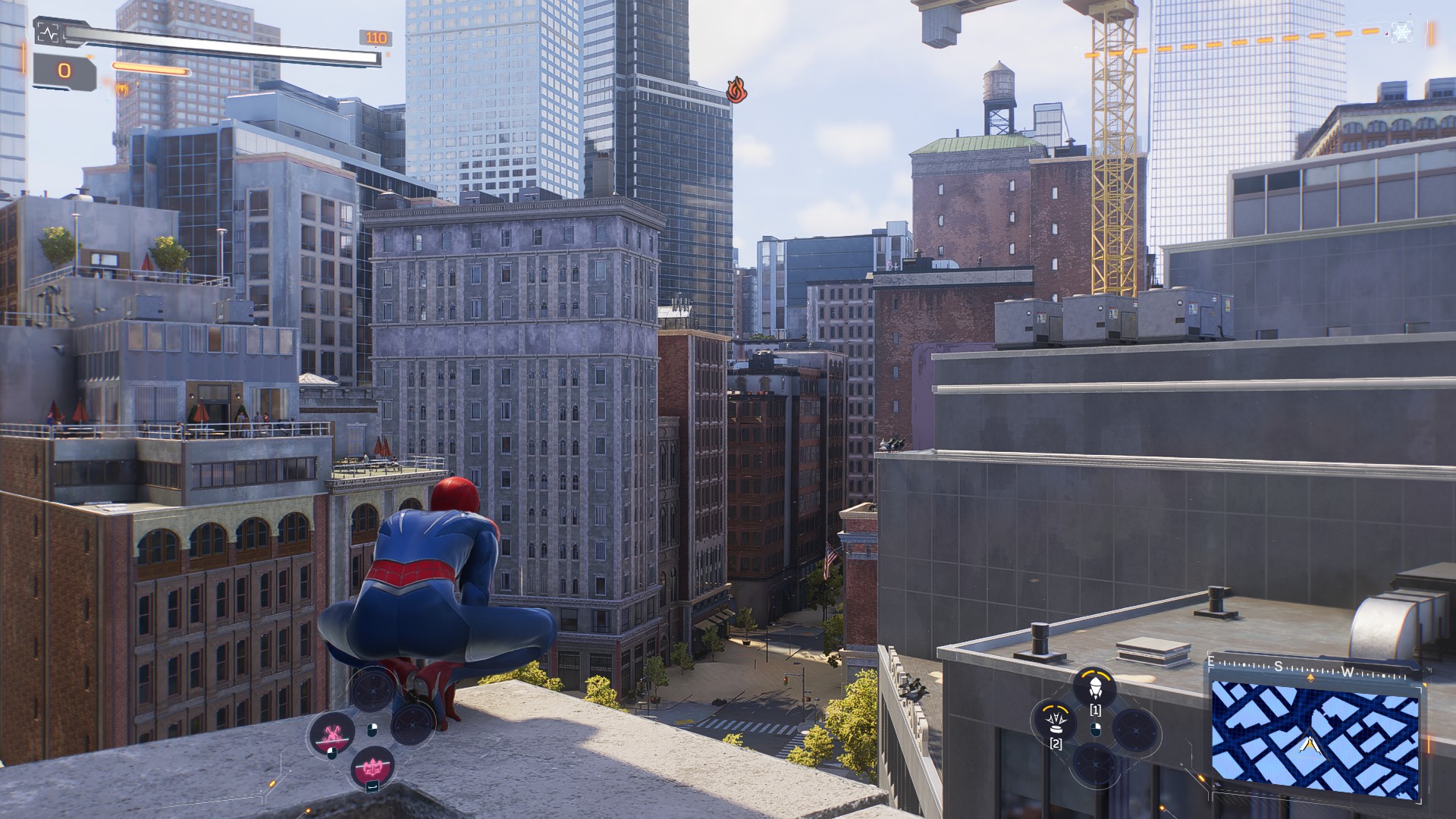
It’s hard not to feel, though, that Peter’s inability to hold down a job or progress his relationship with MJ feels a little higher stakes than Miles… procrastinating over his college application?
Though not wildly different mechanically (they’re separated mostly by a different set of combat powers), the two do feel impressively different, largely thanks to top notch animation work and a commendable attention to detail. Whether swinging through the city or beating up thugs, Miles has a loose, energetic, and inexperienced feel, where Peter’s movements are more confident, deliberate, and grown-up—and each has their own set of dialogue and reactions to anything they run into in the city. How much this dual protagonist feature actually adds to the game is a little questionable I think, but the execution is undeniably slick.
Where the two feel rather less balanced is in the game’s story. Following the conclusions of their respective solo adventures they’re now a tight-knit crime-fighting duo, but both are predictably still struggling to juggle their superhero callings with their personal responsibilities. It’s hard not to feel, though, that Peter’s inability to hold down a job or progress his relationship with MJ feels a little higher stakes than Miles… procrastinating over his college application? He often feels more superfluous than superhero.
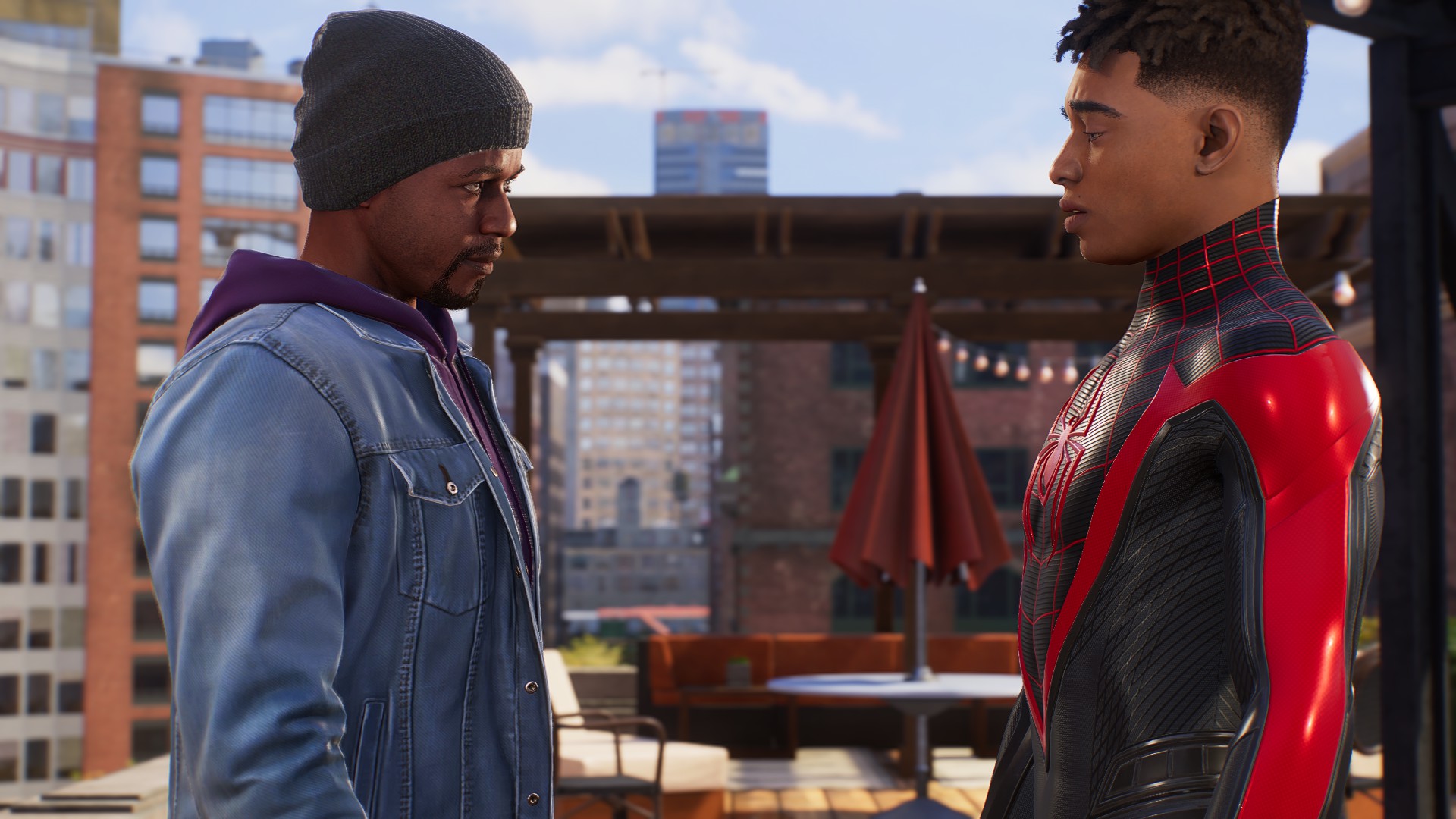
On the whole it’s a tried and true set-up for a Spider-Man story—the perils of leading a double life, making sacrifices to do the right thing, all that jazz. But that does also mean it’s a story we’ve seen an awful lot of times before, not only across films, TV, and comics, but also in the previous two games in this series. It’s a formula that demands a fresh spin to be interesting.
Instead, Spider-Man 2 plumps for a pretty confused take on the now venerable black suit/Venom’s origin storyline. It’s mashed together with an uncharacteristically large-scale invasion of New York by Kraven the Hunter (seeking worthy super-powered prey) and a tangle of other subplots and returning villains. The plot points are outlandish, the themes muddy, and Miles doesn’t really have enough to do. None of that’s necessarily a dealbreaker, though—the real problem is the characters.
Your friendly neighborhood
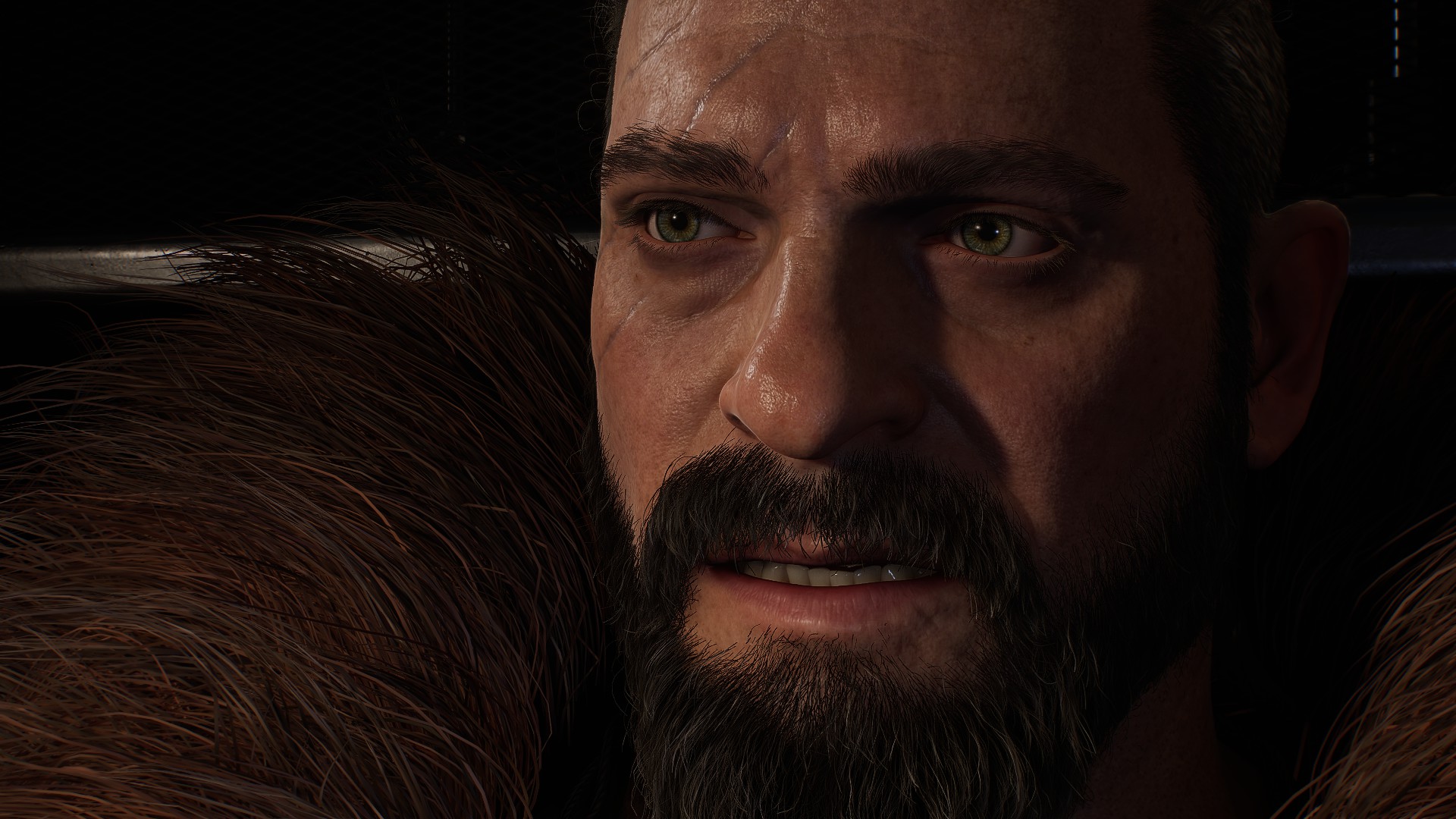
Despite being awash with paramilitary criminal organisations, New York has never felt more toothless and dull.
In a story ultimately all about the emotional stakes and the cast’s relationships with each other, the actual personalities are remarkably flat. Almost everyone fills essentially the same role (Incredibly Nice Genius) and the addition of Miles’ supporting cast means there’s twice as many of them chattering at you.
Dialogue has this odd faux-wholesome tone, like you’re trapped in a corporate training video—all careful politeness and empty one-liners. Even in emotional outbursts and tense confrontations, there’s no edge to anyone or any sense of an inner life. They’re so blandly nice it tips over into being unsettling—you keep getting that feeling like everyone’s waiting for you to leave so they can badmouth you behind your back.
The same issue even extends to the city itself. Despite being awash with paramilitary criminal organisations, New York has never felt more toothless and dull. Anyone Miles and Peter interact with who isn’t part of a supervillain’s crew is as robotically pleasant as the main cast (get ready to meet even more Incredibly Nice Geniuses), and their problems are usually minor and easily solved without the aid of a Spider-Man.
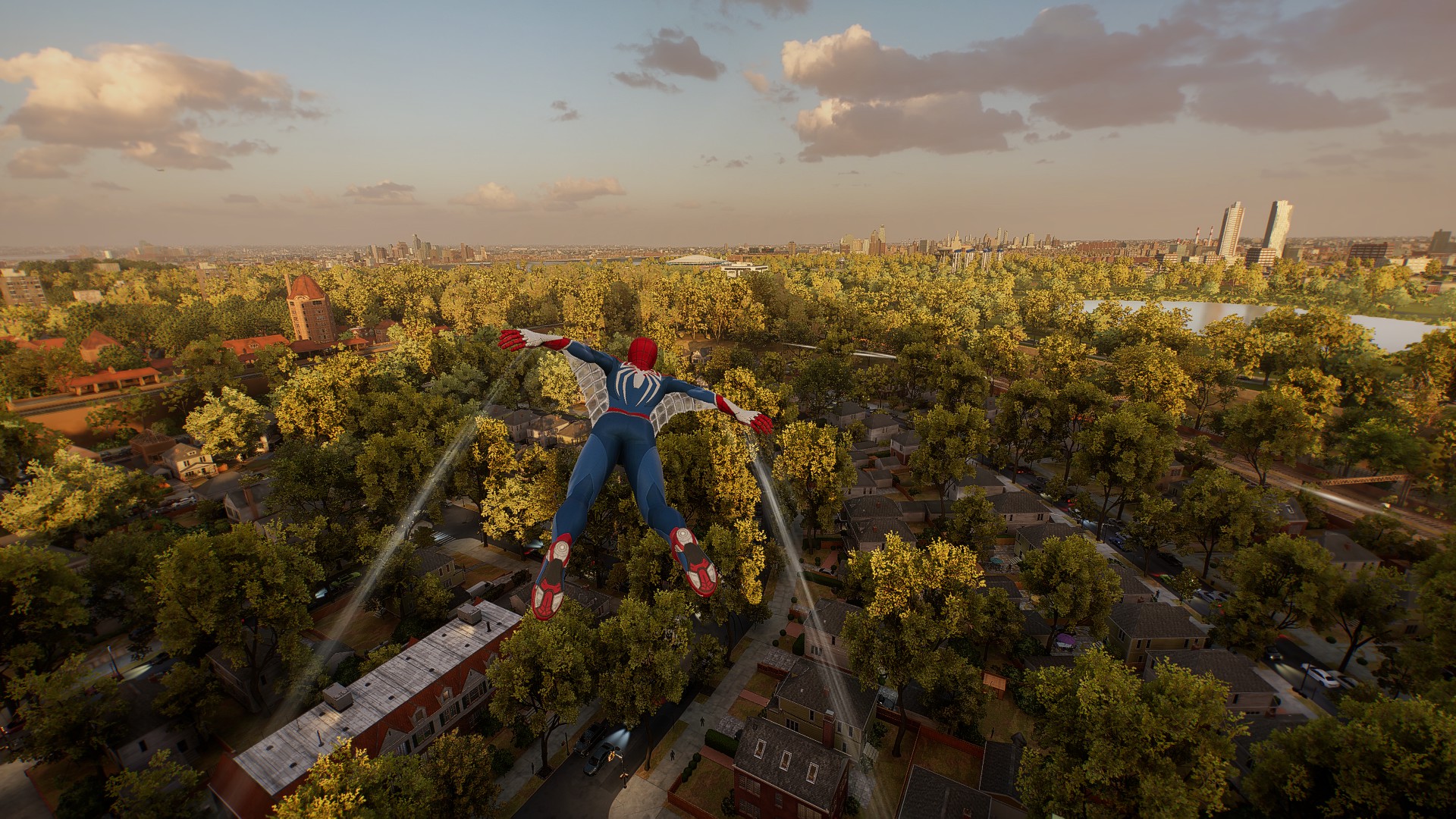
The majority of the side activities wind up feeling both mechanically and narratively pointless. An electric bike race feels silly enough in a Spider-Man game, but when the stakes are just “I need someone to try out my electric bike”, it’s hard not to think Miles and Peter have more pressing stuff to be getting on with. Ditto helping a load of drippy students finish their class projects and ask each other out to prom, stopping some well-meaning tourists from setting off fireworks without a permit, or the endless flying of drones, and remote-control bug robots through holographic rings in the sky. Far too much of what you’re doing feels like padding from the early days of open world games—there’s more inspiration here from Crackdown than there is from GTA V.
It makes those excellent core fundamentals carried over from the first game feel wasted. I find myself traversing the city aimlessly, loving how it feels just to swing around but with nothing to swing towards. And it undermines what’s already a weak story—if the core conflict for both heroes is a lack of balance in their lives, couldn’t that be solved by just not bothering with half this stuff?
Ignore all that cruft and stick to just the main story missions, and what you have is about 10 hours of pretty fun action and impressive spectacle intercut with another 10 hours of limp character moments, predictable plot developments, and increasingly odd stealth missions starring a Mary Jane who seems to have gone to John Wick night school between games. It’s enough of a roller coaster to hold your interest, and the way the city physically changes and evolves to fit the ongoing narrative is impressive (from ‘post-Sandman attack’ to ‘overrun with big game hunters’ and beyond). But from a project this obviously big and expensive, it all feels disappointingly undercooked.
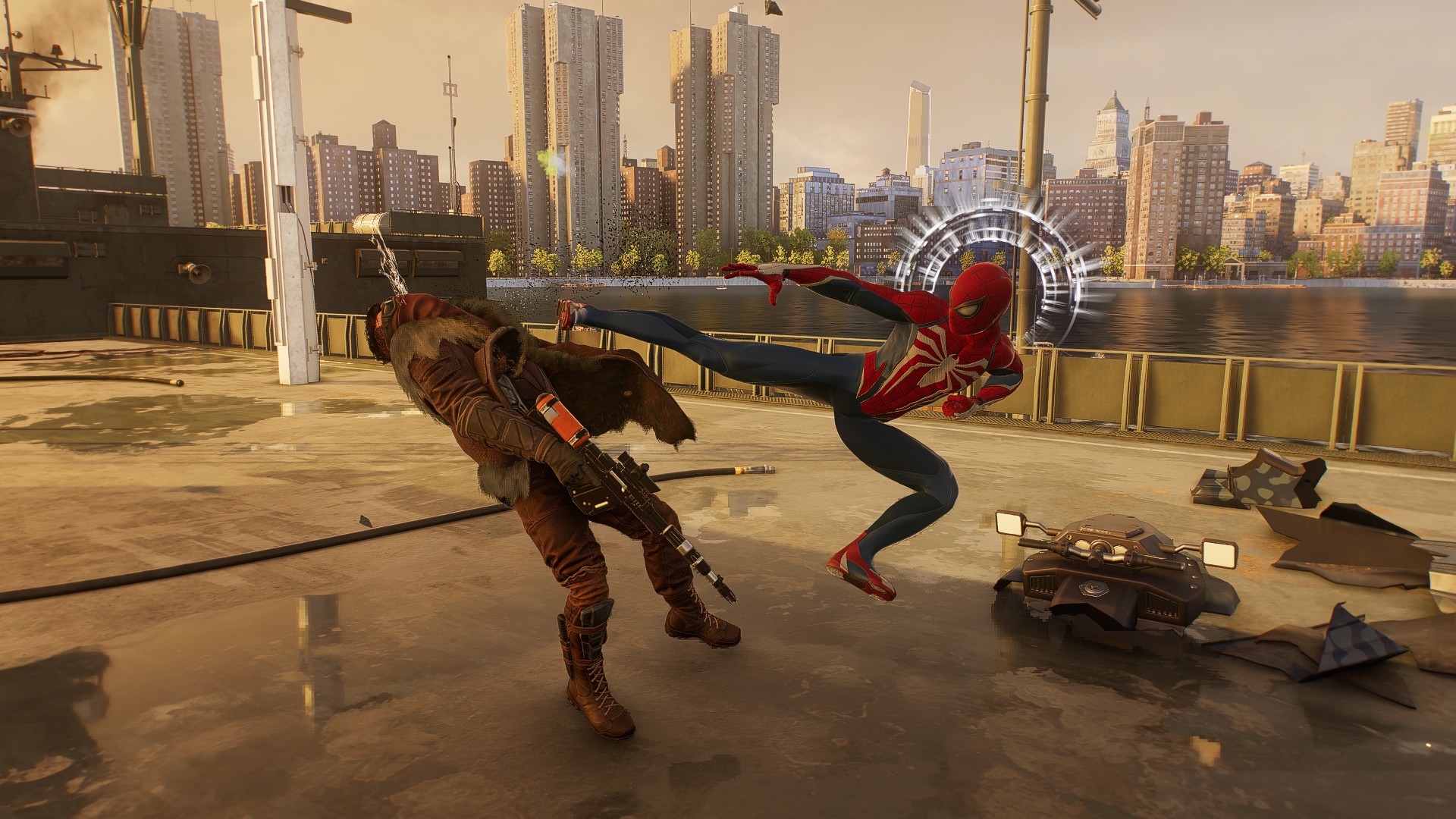
Though hotfixes are flying thick and fast as I finish out this review, for me the patches have so far failed to tackle frequent crashes to desktop.
But not, it must be said, as undercooked as the port work. Though hotfixes are flying thick and fast as I finish out this review, for me the patches have so far failed to tackle frequent crashes to desktop. I find it difficult to diagnose my experience—while others have seen wide-ranging performance issues, for me the game runs smoothly, until it suddenly doesn’t. Without warning, in seemingly undemanding scenes and without any preceding slowdown, the game simply gives up, citing only nonsensical display driver issues. So far it’s happened about once every 30 minutes, seeming to be more frequent during story missions.
While I do now very much appreciate how zealously Spider-Man 2 autosaves, having to reload the game twice an hour has made it all the harder to feel excited and invested in what should be a thrill-a-minute experience. Insomniac Games created something remarkable in the first game: perhaps the best feeling videogame superhero ever. For the most part, this game only makes him feel better—and gives him an equally fun partner to boot. But the studio only seems to have less and less idea of what to actually do with him.
On PS5 in 2023, Spider-Man 2 at least served as an impressive technical showcase for the hardware, and a blockbuster release in a relatively quiet release schedule. On PC in 2025, without those advantages and in a disappointingly shaky state, it’s much more difficult to recommend.




